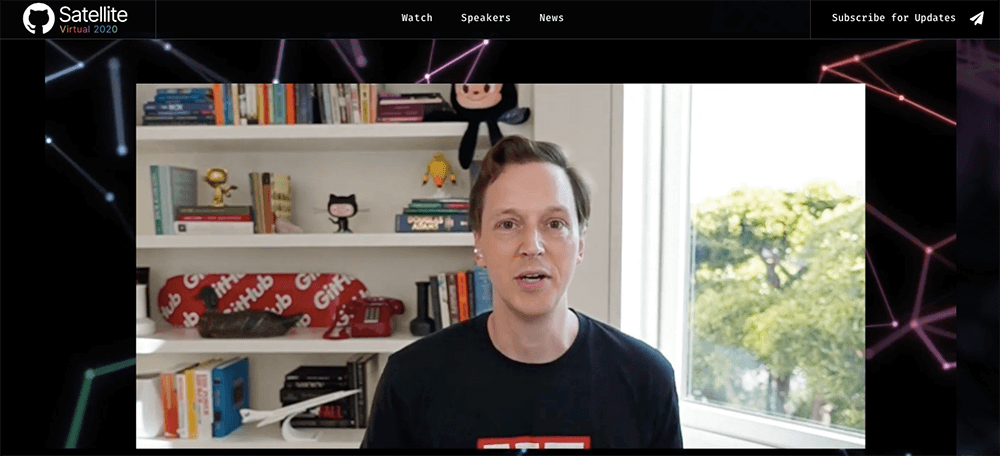
GitHub CEO Nat Friedman welcomes viewers to the 12-hour event Satellite event May 14. (Courtesy GitHub)
When the COVID-19 crisis forced software development platform GitHub to move its annual product event, Satellite, from a three-day, in-person conference in Paris in early May to a virtual event, the company’s CEO gave the events team a tall order: Every portion of the 12-hour online event needed to be live.
In addition to focusing on the right speakers and content for the event, Alaine Newland, GitHub’s senior event producer, set out to eliminate what could go wrong — like potential connectivity challenges that can disrupt any digital gathering. To minimize the risk of tech glitches, Newland helped assemble speaker tech packs to deliver high-quality webcams and microphones to speakers’ home doorsteps.
Newland shared these details and the other steps she and her team took in a “real-world case study” session during Event Marketer’s “The Virtual Event On … Virtual Events” on May 14. “We had technical check-ins and a full rehearsal for the software,” Newland said in the session. “There were virtual green rooms to make sure that speakers had logged in on time, and we had a robust production team to help manage the content.”
However, glitches are an inevitable part of livestreaming. Newland said that the audio dropped minutes before one speaker started, and another presenter lost his internet connection during a session. While nothing in the tech pack GitHub had provided could solve those issues, Newland had come up with a better solution: real people. “We brought in hosts to keep transitions lively,” she said, “and to support in unanticipated situations.”
Finding those hosts did not require an extensive search. Instead, Newland tapped employees at GitHub and hired a trainer to offer guidance on best practices for their hosting duties. “They had the technical expertise so they could authentically speak to the content,” Newland said, as it related to coding and development, “but they also had charisma and high energy.”
Final numbers for the event are still rolling in, but Newland said that there were 71,000 unique website visitors from 90 percent of the world’s countries when the event closed — 71 times greater than the 1,000 attendees she had expected for the face-to-face gathering. And even with the hosts and the high attention to detail, Newland acknowledged the big audience still saw the GitHub team navigate its share of unexpected challenges, including a toddler running into a room during a session. But the silver lining of the current all-digital environment is that online viewers are willing to accept imperfection.
“At this moment in time, there is an appetite for risk,” she said. “We determined that our community would cut us some slack if things didn’t go perfectly. We leaned into the true environment. We’re all humans. That [level of] authenticity is appreciated.”
In addition to authenticity, GitHub’s program offered levity. While the online event’s Work track included serious sessions with titles like “Why inner source is a critical component of FOSS sustainability,” the Play track offered some more playful approaches to education, like a rap battle between a bot and a human (see video below).
David McMillin is an associate editor at Convene.
